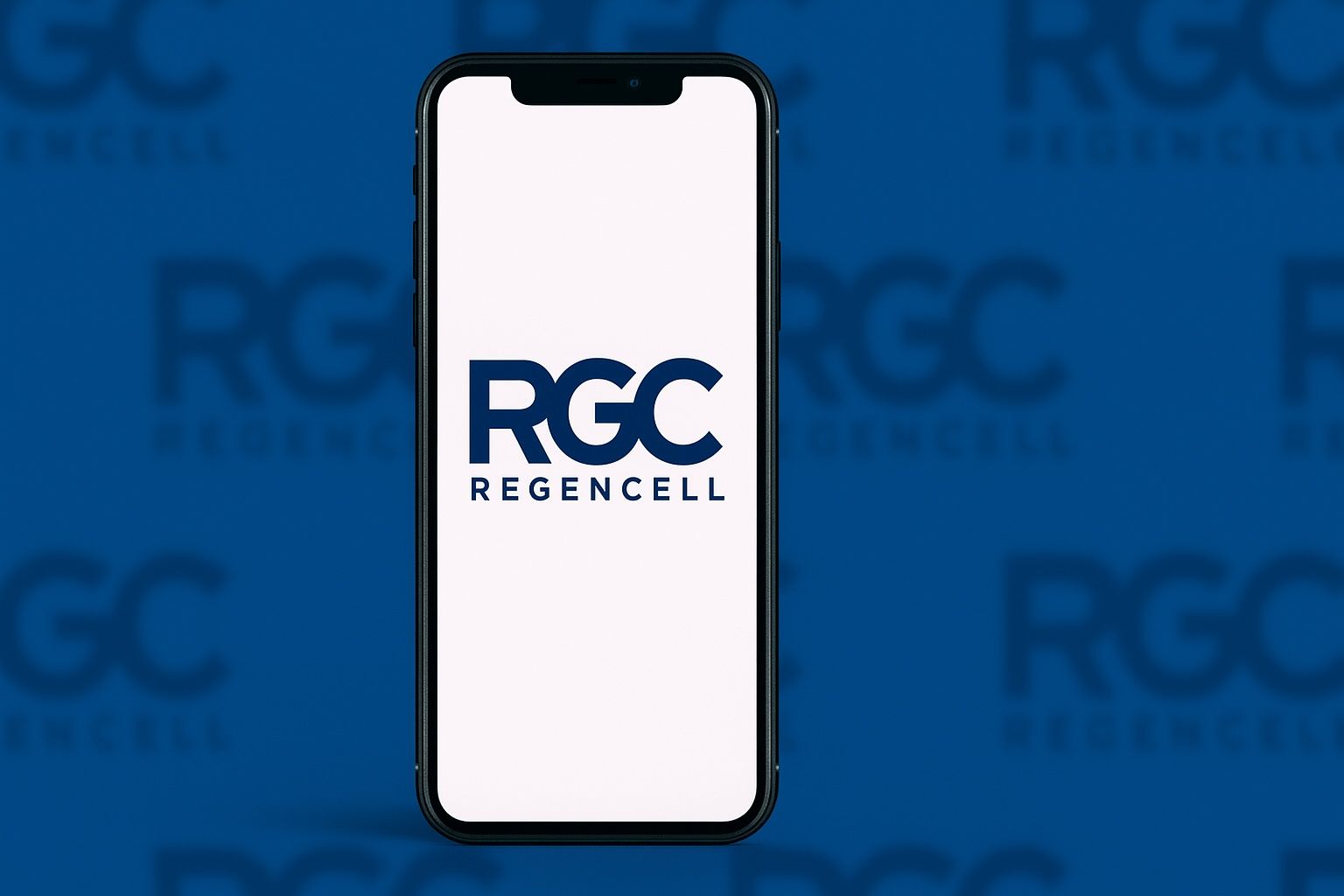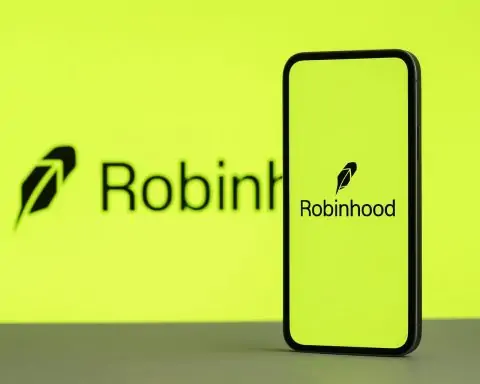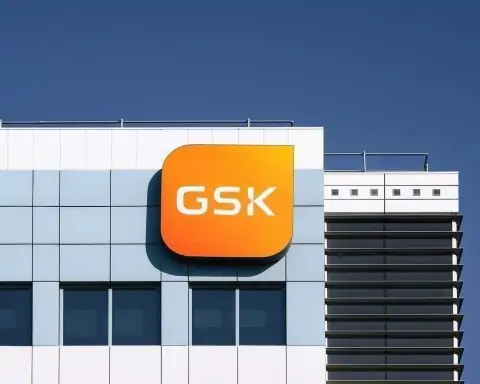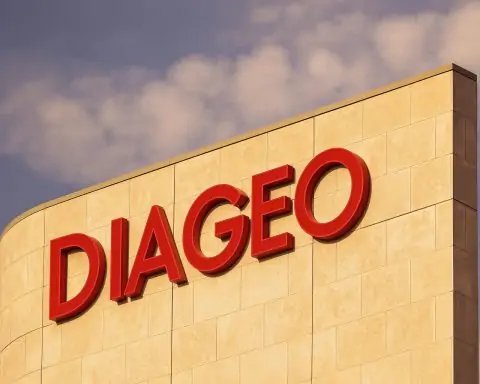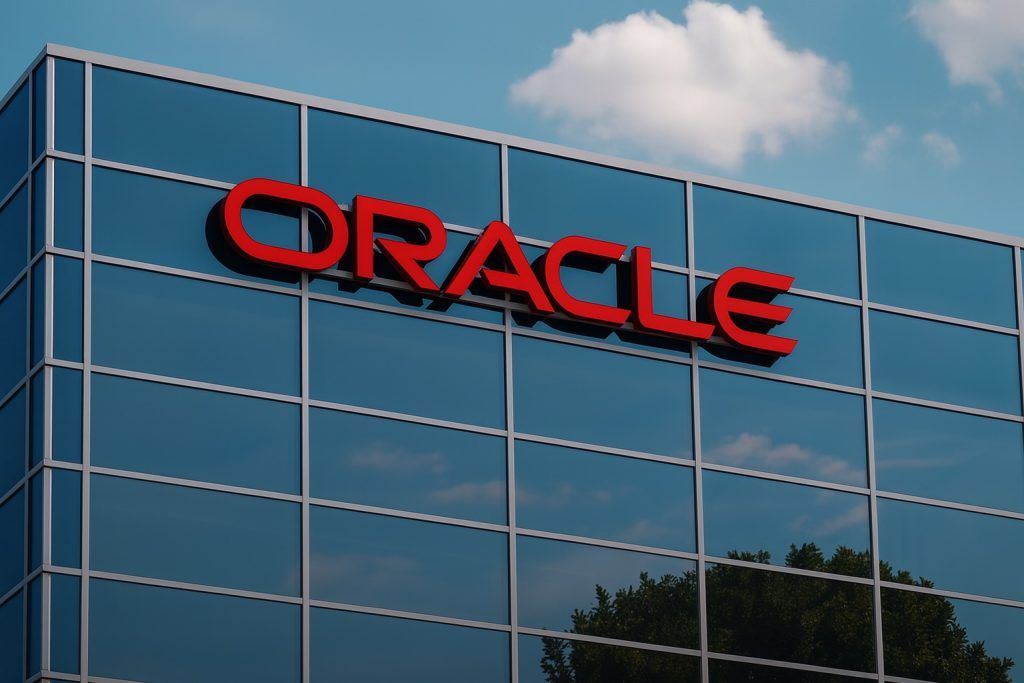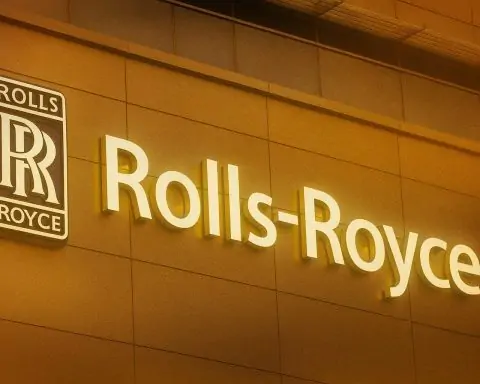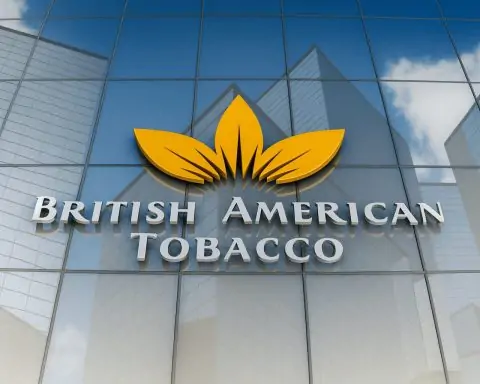- Company Overview: Regencell Bioscience Holdings Limited (NASDAQ: RGC) is a Hong Kong-based biopharmaceutical company developing Traditional Chinese Medicine (TCM) treatments for neurocognitive disorders, particularly ADHD and autism spectrum disorder (ASD) [1] [2]. Founded in 2014 and listed on NASDAQ in 2021, Regencell’s mission is to improve patients’ lives and become a global leader in natural ADHD/ASD therapies [3].
- 2025 Stock Explosion: RGC’s stock price experienced an astronomical surge in 2025, at one point up over 64,000% year-to-date – rising from mere pennies to a 52-week high of $83.60 by mid-June [4]. This frenzy briefly turned a no-revenue startup into a $33 billion market-cap giant [5], prompting comparisons to meme-stock manias. The rally later collapsed ~74% from the peak [6], and as of early October 2025 the stock trades around $17–18 (market cap ~$8.5 billion) [7] [8].
- Recent Momentum: In the first week of October 2025, RGC shares spiked again on positive developments. On October 7, 2025, the stock opened at $17.97 (up from $17.25 prior close) and jumped 6–9% intraday to around $18.42–$18.75 [9] [10]. This continued a short-term uptrend – the stock gained ~12% over the past two weeks [11] – buoyed by a major index inclusion and encouraging trial results (detailed below).
- Latest Catalysts: Index Inclusion & Trial Results – On September 21, Regencell was added to the S&P Global BMI Index, boosting its visibility among institutional investors [12]. Around the same time, the company announced positive Phase II trial data: its herbal formula showed a 37% improvement in ADHD/ASD symptoms with no adverse side effects in an interim study [13]. These developments, reported in early October, fueled renewed investor enthusiasm for RGC [14] [15].
- Sky-High Valuation, Zero Revenue: Despite an ~$8.5 billion market capitalization [16], Regencell has yet to generate any revenue and remains unprofitable (FY2024 net loss ~$4.4 million) [17]. Traditional valuation metrics are effectively meaningless – P/E, P/S, and PEG ratios are not applicable due to negative earnings and zero sales [18]. Even after the recent pullback, RGC is “priced for perfection”, trading at levels (>$$8B) typically reserved for biotechs with approved drugs or advanced clinical success [19].
- Analyst Sentiment: Wall Street coverage is sparse, but the outlook is highly skeptical. Weiss Ratings recently reaffirmed a “Sell” rating on RGC [20], and MarketBeat reports the lone analyst consensus as “Strong Sell” [21]. Independent analysts have warned that RGC’s valuation is detached from fundamentals – one commentator bluntly labeled it a “house of cards” driven by hype [22]. That said, a small contingent of speculators remains bullish, betting on further squeezes or a future breakthrough.
- Investor Base & Volatility: Insiders control ~96% of RGC’s shares (CEO Yat-Gai Au alone holds ~80%+) [23] [24], leaving a tiny float (~19–30 million shares) available to trade. This ultra-low float, combined with earlier heavy short interest, created extreme volatility – RGC saw multiple trading halts during its parabolic run [25]. The stock’s beta > 2 reflects outsized swings (often moving twice the market’s volatility) [26]. Trading sentiment is polarized: enthusiastic retail traders on social media have compared RGC to past meme stocks like GameStop and HKD [27], while most institutional investors have stayed on the sidelines (institutional ownership <0.2% [28]) amid governance concerns and unpredictable price action.
- Short- vs Long-Term Outlook: In the short term, RGC is expected to remain a high-risk momentum trade – continued volatility is likely as traders react to any news, and technical forecasts see the stock oscillating in the high-teens per share through year-end [29]. In the long term, RGC’s fate hinges on execution: either it achieves clinical and commercial success with its TCM therapies or the hype could collapse. The bull case is that successful larger trials (planned in Asia) and eventual regulatory approvals could validate Regencell’s treatments, potentially justifying its valuation or more. The bear case is that without real progress (e.g. Phase 3 trial success, partnerships, or revenue), the stock could continue eroding – even back to penny-stock territory – as financing needs and scientific hurdles mount [30] [31].
Company Profile and Mission
Regencell Bioscience is an early-stage biotech company focused on Traditional Chinese Medicine. Headquartered in Causeway Bay, Hong Kong, Regencell researches, develops, and aims to commercialize herbal treatment formulae for neurocognitive disorders – primarily Attention Deficit Hyperactivity Disorder (ADHD) and Autism Spectrum Disorder (ASD) [32] [33]. The company’s approach is based on the “Sik-Kee Au TCM Brain Theory,” a proprietary herbal methodology developed by the CEO’s father [34].
Founded in 2014 by CEO Yat-Gai Au, Regencell went public on NASDAQ in July 2021 [35]. The firm positions itself as a socially responsible, mission-driven enterprise: “Our goal is to save and improve the lives of patients, families and caregivers and be the market leader for the best treatment of ADHD and ASD globally,” the company states [36]. In practice, Regencell plans to launch three standardized TCM-based formulas addressing varying severities of ADHD/ASD, initially in Hong Kong and potentially expanding to other Asian markets [37].
Notably, Regencell also experimented with applying its TCM platform to infectious diseases. During the pandemic it developed an herbal formula (“RGC-COV19™”) for COVID-19 symptoms, reporting some positive early trial results in 2022 [38]. However, neurocognitive disorders remain its core focus. As of 2025, Regencell has no approved products and all its treatments are investigational (no FDA or EMA approvals yet) [39]. The company’s operations are funded by equity – including significant insider investment – rather than product revenue, as Regencell has yet to record any sales [40].
The management and ownership structure is unusual: CEO Yat-Gai Au is also the controlling shareholder, owning roughly 80–81% of outstanding shares [41] [42]. Including other insiders, over 96% of shares are held by company insiders, leaving a tiny fraction as public float [43]. This reflects the founder’s strong personal conviction (he’s even purchased additional shares on the open market in the past [44]), but also concentrates corporate control and limits liquidity.
Recent Stock Performance (Early October 2025)
After a period of relative calm in Q3 2025, Regencell’s stock has shown renewed momentum in late September and early October. The catalyst was a pair of news announcements (index inclusion and trial data) that hit the headlines as the fourth quarter began. RGC’s share price, which was around the mid-teens in mid-September, climbed steadily into the high teens by the first week of October – outperforming the broader market over that short span. In fact, the stock rose for 4 consecutive sessions heading into October 6 [45], gaining ~11.7% over two weeks [46].
On October 6, 2025 (Monday), RGC closed at $17.25, up +0.88% for the day [47]. Trading volume was lighter than average on that day (148k shares vs. ~230k average) [48] [49], suggesting some consolidation after the prior run-up. Then came Tuesday, October 7, 2025, when Regencell’s stock saw a noticeable jump at the open: shares gapped up from the previous $17.25 close to open at $17.97 [50]. The early buying continued, and by mid-day RGC traded as high as $18.75 (+8.7%) on intraday charts [51]. It eventually ended the day around the mid-$18 range, reflecting roughly a 6–9% single-day gain. This surge lifted RGC’s market cap by several hundred million dollars in one day – quite significant for a company of its size.
Such rapid moves are not unusual for RGC given its history. In 2025, the stock has been extremely volatile: it has a 5%+ daily volatility on average [52], and traders have observed that even minor news or rumors can trigger outsized swings. For instance, during the October 7 session the stock’s intraday range was $17.40 to $18.81 [53], a swing of about 8%. Technical indicators show RGC’s price is now well above its short-term moving averages (e.g. the 50-day MA is ~$14.1 [54]), indicating strong recent upward momentum.
It’s worth noting that this latest rally still pales in comparison to RGC’s all-time highs reached earlier in the year. At ~$18 per share, the stock is down ~78% from its June peak of $83.60 [55]. However, due to a 38-for-1 stock split in June, many historical price references are adjusted. The split, executed June 16, 2025, reduced the per-share price and massively increased share count (each shareholder got 37 extra shares) [56]. This action improved liquidity and made RGC “look” cheaper to retail traders – a move that, coinciding with rampant speculation, helped fuel the summer price explosion [57]. Post-split, the 52-week low is $0.09 (split-adjusted, reflecting pre-split penny levels) and the 52-week high is $83.60 [58]. The current ~$18 price sits closer to the lower end of this vast range, but still about 13,000% higher than where it began 2025 [59] (around 10¢).
In summary, recent days have seen renewed bullish momentum for RGC, with the stock climbing on relatively positive news. Short-term traders are actively trading the volatility – the stock has become a favored playground for momentum players – while longer-term investors remain cautious. The key test will be whether RGC can hold these gains or extend them, especially as broader market conditions and any company updates unfold later in the month. (Regencell has an earnings update scheduled for October 24, 2025, which could be a volatility event if any new guidance on trials or finances emerges [60].)
Major News and Developments (Late Sept – Early Oct 2025)
The first week of October 2025 brought concrete news that helped underpin Regencell’s stock resurgence. Two developments stood out:
- 1. S&P Index Inclusion (Effective Sept 21, 2025): Regencell Bioscience was added to the S&P Global BMI Index in late September [61]. The S&P Global BMI is a broad global equity index; inclusion means that some index-tracking funds are now required to buy and hold RGC shares. This can increase baseline demand and liquidity for the stock. More importantly, index inclusion was seen as a form of validation – a milestone indicating that RGC had grown large enough (by market cap) to be noticed. Insider Monkey reported that this “boosts [RGC’s] visibility among institutional and passive investors” [62]. In practice, because RGC’s free float is so small, even modest forced buying by index funds likely contributed to upward price pressure. By improving liquidity and potentially reducing volatility over time [63], the index news was a positive catalyst for investor sentiment. (That said, as of early October, institutions still own only ~0.1% of RGC [64] – the stock remains mostly in insider and retail hands.)
- 2. Positive ADHD/ASD Trial Results: In parallel, Regencell announced encouraging interim results from its second efficacy trial of a TCM formula for ADHD and autism. In an update released around the end of September, the company reported a 37% mean improvement in clinical symptom scores for children treated with its herbal formula, with no adverse side effects observed [65]. This trial – conducted in Malaysia and Hong Kong – is part of Regencell’s effort to prove that its natural therapy can meaningfully help neurodivergent patients. The results were “encouraging,” though it’s important to note the treatments are still in experimental stages and no regulatory approvals have been secured yet [66]. The trial was relatively small-scale (as suggested by it being a Phase II/efficacy trial), and no peer-reviewed publication has come out so far. Nonetheless, the absence of side effects and the ~37% improvement figure provided a tangible proof-of-concept to bolster Regencell’s story.
These two pieces of news were widely circulated via financial outlets and press releases in the week of Sept 29 – Oct 6. Yahoo Finance, for example, carried a news piece on October 1, 2025 titled “RGC Added to S&P Global BMI Index Amid Positive ADHD/ASD Trial Results.” The article highlighted the index inclusion and trial outcome, while cautioning that Regencell still faces “zero revenue, ongoing losses, and uncertain regulatory pathways” despite these advances [67] [68]. In other words, the market-friendly news didn’t alter the fundamental challenges the company must overcome.
In addition to the above, there were some institutional moves and media discussions worth noting:
- Hedge Fund Buying: Recent SEC filings (for Q2 2025) showed a few institutional investors took new positions in RGC, likely anticipating the index addition. MarketBeat noted that Geode Capital Management – a large index fund manager – increased its stake in RGC by an astounding +5,637% in Q2 (now holding ~391,000 shares) [69] [70]. Other funds like Squarepoint and BNP Paribas’ trading arm also bought small stakes [71]. However, in total only ~0.13% of RGC’s shares are owned by hedge funds and institutions [72], underscoring how unusual this stock is for professional investors. The Geode purchase in particular likely correlates with index inclusion (index funds had to buy RGC as it joined the index).
- Media and Analyst Commentary: The spectacular rise and volatility of RGC in 2025 garnered considerable media attention. In early October, Simply Wall St and TS2.tech both published in-depth analyses scrutinizing Regencell. Simply Wall St emphasized the recent news as potential “inflection points” but noted “fundamental risks remain: [RGC] has yet to record any revenue, is unprofitable, and faces an uncertain regulatory path” [73]. The TS2.tech article (titled “Regencell Stock Skyrockets 64,000% – Miracle Biotech or Bubble?”) went viral for its dramatic account of RGC’s rise. It pointed out that no FDA approvals or breakthrough developments had occurred prior to the surge – “no press conference, no update” – just a frenzy of speculative buying [74]. TS2.tech also reported that regulators had to halt RGC trading multiple times during the June spike due to extreme volatility [75].
- Miscellaneous: No new financial results were released in this period (RGC reports semi-annually, with the next earnings update due Oct 24, 2025 [76]). There were also no major partnership announcements or M&A rumors in the last week. The focus remains squarely on Regencell’s internal progress (clinical trials) and the market dynamics of its stock.
In summary, the past week’s news flow for Regencell was predominantly positive, triggering a relief rally in the stock. Yet, each positive was coupled with a reminder of the company’s unresolved hurdles. Index inclusion brought in passive buyers but also highlighted the governance red flags keeping active institutions away. Trial success provided validation of the TCM approach but also underscored that full commercialization is still years away (with Phase 3 trials, larger sample sizes, and regulatory approval processes yet to come [77] [78]). This duality – optimism about the concept, caution about the execution – is a running theme in how the market is digesting RGC’s story.
Expert Analysis and Forecasts
Wall Street Analysts: Traditional equity research coverage on RGC is minimal, as many banks avoid such speculative micro-revenue stocks. According to MarketBeat data, only one analyst formally covers Regencell, and their recommendation is “Sell” [79]. In late September, Weiss Ratings (an investment ratings firm) reiterated its Sell (E+) rating on RGC [80], citing the stock’s sharp run-up and lack of fundamental support. No consensus price target is available – Yahoo Finance shows “n/a” for RGC’s one-year target [81], reflecting the high uncertainty.
However, plenty of independent analysts and financial commentators have weighed in on RGC’s wild 2025 ride:
- Valuation Concerns: Many experts express disbelief at Regencell’s multi-billion valuation given its early stage. TS2.tech highlighted that comparably risky biotech peers (with one or two Phase 2 candidates and no revenue) are usually valued in the hundreds of millions, not billions [82]. “No-revenue biotechs surpassing $8B are virtually unheard of outside of bubble episodes,” the TS2 report noted pointedly [83]. Simply Wall St’s community valuation tool pegs RGC’s fair value near $0 (essentially saying it’s all speculative premium) [84]. While that may be extreme, it underscores how far fundamentals lag the stock price.
- “Miracle or Mirage”: The TS2.tech analysis (Oct 4, 2025) did a deep dive, likening RGC’s surge to meme stock frenzies such as AMTD Digital (HKD) and GameStop [85]. The piece notes that RGC’s share price was propelled by online forum hype and a short-squeeze dynamic, “not fundamentals.” At one point in June, RGC had >82,000% YTD gains, which an analyst quoted in TS2 called “a short squeeze on steroids” given the tiny float and heavy short interest at the time [86]. Following the crash, TS2 observed that “even after the pullback, RGC is priced for miracles… The share price is entirely built on momentum and speculation rather than business performance” [87]. In that vein, Finimize (an investment research service) labeled Regencell “a pure speculative biotech gamble”, warning it’s “all about hype… not about business progress or profit.” [88] [89]. The consistent message: extreme caution is warranted.
- Forecasts & Price Trajectory: Given RGC’s unpredictability, most analysts refrain from precise price forecasts. Instead, they outline scenarios. In the short run, the consensus is that volatility will persist. “Expect RGC to remain highly volatile in the near term… news or even rumors can cause outsized moves,” TS2.tech commented [90]. The stock’s beta of ~2.0 confirms that it tends to swing about twice as much as the market on a given day [91]. Technical analysis-based forecasts (e.g. CoinCodex) predict RGC shares will trade roughly in the $17–18 range over the next month [92] [93], essentially flat with current levels. This suggests that without a new catalyst, the upside might be capped in the immediate term – a view echoed by some chart analysts who note resistance around $19–$20. On the downside, algorithms see a potential drift lower (CoinCodex even posited a mildly negative return by year-end) [94], although no major drop is forecast unless bad news hits. It’s worth stressing that these automated forecasts have a low confidence interval given RGC’s erratic behavior.
- Professional vs Retail Sentiment: There is a notable divergence in outlook between professional analysts and retail traders. Professionals overwhelmingly urge skepticism: for example, an analyst on TipRanks called RGC’s valuation “a house of cards” and said the stock is “priced for perfection – an understatement here, RGC is priced for miracles” if one expects everything to go right [95] [96]. Retail bulls, in contrast, often point to the massive insider ownership and the CEO’s commitment as positive signs, and speculate that RGC could be “the next big thing” in alternative medicine if its trials succeed. Insider Monkey’s report noted that RGC actually topped a list of “healthcare stocks with insider buying in 2025,” referencing CEO Au’s large share purchases [97]. This insider confidence is part of the bull narrative.
In summary, the expert consensus leans bearish due to the disconnect between RGC’s valuation and its fundamentals. Forecasts from credible sources imply limited near-term upside and warn of significant downside risk if the company falters. That said, a few optimists (often on investing forums or niche newsletters) maintain that Regencell’s unique angle – blending TCM with biotech – could pay off big in the long run, and they view current prices as justified by future potential. It’s a classic high-risk/high-reward split in opinions.
Investor Sentiment and Market Dynamics
Current investor sentiment on RGC is sharply split. On one side are momentum traders and speculative retail investors who remain excited about the stock’s dramatic moves and the story of a possible breakthrough in ADHD/autism treatment. On the other side are value-oriented investors and most institutions who view the stock’s rise as an irrational bubble (or at least highly premature given the company’s stage).
On social media platforms like Reddit and X (Twitter), RGC has a following of believers who share anecdotes of Traditional Chinese Medicine successes and speculate that Regencell’s formulas “could disrupt Big Pharma.” They frequently cite the CEO’s massive equity stake (over 80%) as a vote of confidence – noting that Yat-Gai Au’s interests are closely aligned with shareholders, since he is the majority shareholder [98]. This group also cheers the recent trial results, hoping they presage eventual FDA approvals. Some retail holders have likened RGC to Moderna or BioNTech in early days – high-risk ventures that paid off – albeit acknowledging that Regencell’s approach is unproven. FOMO (fear of missing out) plays a role too: RGC’s spike to $83.60 (pre-split equivalent to over $3000/share) is cited as evidence of the “mooning” potential if another speculative wave hits.
Contrastingly, among professional circles (and cautious retail investors), sentiment is alarmed and skeptical. Many see RGC as emblematic of a speculative excess. The fact that the stock soared 82,000%+ without any fundamental triggeris frequently mentioned as a red flag [99]. The subsequent crash from June’s peak, and the stock’s ongoing high volatility, underscore the view that this is more akin to a casino bet than an investment. The term “bubble” is used liberally – e.g., TS2.tech’s piece directly asked if RGC is a “miracle biotech or bubble”. Seasoned biotech investors point out that comparable firms with no revenue typically trade at a tiny fraction of RGC’s market cap [100] [101]. There’s also skepticism about the TCM angle – Western investors know relatively few success stories of herbal medicine companies achieving global approval and sales, so RGC faces extra credibility hurdles in their view [102] [103]. For these reasons, most institutions have avoided RGC: it’s telling that institutional ownership is only ~0.14% [104]even after the index inclusion forced some passive buying.
Market dynamics also play into sentiment:
- The low float and high insider ownership amplify every price move. When momentum is upward, the scarcity of float can lead to exaggerated spikes as shorts scramble to cover and would-be buyers find few sellers. We saw this in mid-June when, according to AInvest, trading volume jumped 2,700% in one day and created a feedback loop squeezing shorts [105]. Conversely, when sentiment turns and selling hits, there are few buyers (since insiders aren’t selling), so the price can gap down violently. This boom-bust pattern has made RGC infamous. Some traders thrive on this volatility – RGC has become a popular target for day traders using technical analysis to ride intraday swings.
- Trading halts and regulation: The extreme moves have attracted regulatory attention. U.S. exchanges reportedly imposed multiple volatility trading halts on RGC during its parabolic rise [106]. While no wrongdoing has been alleged, the stock has the hallmarks of what regulators call a “market frenzy”. Any hint of investigation or new trading restrictions would spook investors, a risk that lingers in the background. Short-seller communities are also eyeing RGC – although short interest currently is very low (~0.38% of float) [107], partly because the earlier squeeze burned many short sellers.
- Investor forums: On forums like StockTwits and Discord, one can find both exuberant bulls and doomsaying bears. Bulls share screenshots of enormous (paper) profits from the early run-up, reinforcing a “hold for the moon” mentality. Bears share valuation math and peer comparisons to argue RGC could fall 90% more. Interestingly, some retail investors have shifted from bullish to bearish after the crash, feeling that the “party’s over” until real news (like Phase 3 results) arrives. Overall, current sentiment seems tentatively positive in the very near term (thanks to the recent good news), but fragile – it could flip to fear with any adverse development.
Finally, it’s worth mentioning the context of insider sentiment: Yat-Gai Au (CEO) has not sold shares despite the huge price increase (as far as filings indicate). His steadfast holding (and past additional buys in 2021–2022 [108]) is a comfort to some investors – they believe he truly believes in Regencell’s mission more than short-term stock gains. There’s always a question of whether/when the company might issue new shares (since it needs cash), which would dilute insiders as well. So far, no such secondary offering has occurred in 2025, which in itself has kept some bulls optimistic that management thinks the stock is undervalued or fairly valued at these levels.
In summary, investor sentiment is highly bifurcated: excitement and optimism on one side (around the vision of a pioneering TCM therapy and the stock’s trading opportunities), and doubt and caution on the other (around the massive valuation and bubble-like trading behavior). This tug-of-war in sentiment contributes to the stock’s ongoing volatility.
Outlook: Forecasts, Valuation and Risks
Looking ahead, Regencell Bioscience presents a high-risk, high-reward profile. Both the short-term and long-term outlooks are uncertain, but we can frame them in terms of scenarios, valuation considerations, and key risks:
Short-Term (Next 3–6 months): Expect continued volatility and news-driven moves. In the absence of major clinical or business developments, RGC’s share price will likely gyrate within a range as speculative interest ebbs and flows. Technical models suggest a probable trading range roughly between $12 and $19 in the next few months [109]. For example, StockInvest.us’s algorithm assigns a 90% probability RGC stays between ~$12.36 and $19.46 per share over the next 3 months [110]. CoinCodex similarly forecasts an average price in the high-$17s through Q4 2025 [111]. These imply modest downside/upside around the current price – essentially consolidation after the wild swings.
However, short-term catalysts could break this range in either direction:
- On upside, any further positive news could ignite another rally. For instance, if RGC were to announce additional trial results (perhaps final data from the ongoing efficacy trial, or the start of a Phase 3) showing strong efficacy, that would lend credibility to the science and likely spur buying. Similarly, if a credible partner (say a pharma company or a major investor) were to invest or collaborate, it would be a bullish validation. And because the float is so limited, even a moderate wave of buying interest could cause outsized price jumps – another short squeeze is not out of the question if circumstances align (though one shouldn’t bank on it) [112] [113].
- On downside, the risks in the near term include dilution and regulatory or technical factors. Regencell will likely need to raise capital within the next couple of quarters to fund larger trials. Its cash on hand is reportedly only a few million USD, not enough for extensive Phase 3 studies [114]. A secondary stock offering or similar fundraising could put significant downward pressure on the stock – especially if priced below the market price (e.g., an equity raise at $10/share would probably pull RGC’s trading price toward that level) [115] [116]. Another short-term risk: any sign of regulatory scrutiny of RGC’s trading (or a bearish short-seller report) could send skittish traders running for the exits, given how sentiment-driven this stock is. And of course, any disappointing news – such as safety issues in trials or delays in development – would likely be met with a severe sell-off, as the current valuation leaves no margin for error [117] [118].
Overall, for the short term, analysts advise caution. Even bullish observers qualify that RGC is suitable “only for those who can stomach volatility” and suggest keeping any position very small [119]. The stock could just as easily be $10 or $30 a few months from now, depending on how speculative fervor or fear tilts, without any change in fundamentals.
Long-Term (Next 1–5 years): Over a longer horizon, RGC’s trajectory will be determined by fundamental outcomesrather than trading technicals. By, say, 2030, Regencell will either have proven itself to some degree – or not. This yields a binary-looking long-term outlook:
- Bullish Success Case: In the optimistic scenario, Regencell successfully completes larger trials in Asia that confirm its TCM treatment’s efficacy and safety in ADHD/ASD. Perhaps it secures regulatory approval in at least one market (maybe Hong Kong or a Southeast Asian country) and even commercializes its formulas, generating its first revenues. If these therapies gain traction (even regionally) and especially if Western regulators show openness to TCM-based treatments, Regencell could evolve into a legitimate mid-tier biotech. Under those conditions, today’s ~$8 billion valuation might be justified or even exceeded – though it’s arguable that a lot of future success is already priced in. Big pharma might also show interest; a partnership or acquisition could be on the table if the science is validated. Bulls argue that RGC’s current price could look cheap “if the company becomes a leader in a new category of treatment.” However, reaching that point would require flawless execution: successful Phase 3 trials, regulatory approvals across multiple countries, and then strong commercial adoption in the face of entrenched traditional therapies [120] [121]. This is a multi-year journey, and even in success, Regencell might have to raise more cash (diluting shareholders) to fund it. Still, a long-term bull might envision RGC as a company with a few hundred million in annual revenue by early 2030s, supporting or surpassing its current market cap – effectively growing into its valuation.
- Bearish Failure Case: In the pessimistic scenario, Regencell’s treatments fail to demonstrate sufficient efficacy in larger, placebo-controlled trials or run into unforeseen safety issues. Without a clear clinical win, the hype and hope that currently buoy the stock would dissipate. Additionally, the company could face cash crunches (given ongoing losses and R&D expenses) and be forced to continually dilute shareholders or take on debt just to survive. If the core premise – that TCM formulas can effectively treat ADHD/ASD – doesn’t pan out, Regencell’s stock could implode. In this outcome, RGC might trade near cash value, which could be a tiny fraction of today’s price (for instance, if only a few million dollars of cash remain, the market cap could shrink similarly). Essentially, the stock could “round-trip” back to penny-stock levels over a few years, as many failed biotech stories do [122] [123]. This scenario is not far-fetched: most early-stage biotech ventures do not succeed in bringing a drug to market. The current valuation implies a high probability of success; if that probability diminishes, so will the valuation.
- Middle Ground: There’s also a possible middle scenario: RGC neither hits a home run nor goes bust in the next couple of years. Instead, the stock could stabilize in a moderate range (say, $10–$20) as the company works through trials and the initial hype settles. TS2.tech suggested the stock might enter a period of consolidation, trading sideways for an extended period as speculative traders lose interest and more fundamental-focused investors wait for concrete results [124]. During such a time, volatility would decrease and the company would be under pressure to deliver real progress. If Regencell can use its elevated stock price to raise enough capital now, it could fund operations for a couple of years and give itself a fighting chance to create value. In this middle scenario, the stock wouldn’t have dramatic moves but would gradually respond to the outcome of clinical milestones.
Key Valuation Metrics and Considerations: With RGC, traditional metrics must be taken with a grain of salt:
- The company’s market cap is ~$8–9 billion (fluctuating with the stock price) [125] [126]. Yet, its book value and tangible assets are minimal. As of the last report, cash was low and annual operating losses are in the few millions [127]. This means RGC trades at an astronomical price-to-book and price-to-sales (infinite, since sales = 0). Even price-to-earnings is not meaningful; with a trailing net loss around $4 million, the P/E is effectively negative (and enormous in absolute terms) [128] [129]. Such metrics underscore how the valuation is almost entirely based on intangible future expectations.
- If we benchmark against peers: A small biotech with a Phase 2 asset and no revenue might typically be valued at $100–500 million. RGC at $8B+ stands out like a skyscraper in a prairie. The difference, of course, is RGC’s stock became a momentum phenomenon. If one were to value RGC on a discounted cash flow basis, you’d have to assume eventual hundreds of millions in annual profit a decade from now to justify $8B today – a very tall order. Simply Wall St’s valuation models effectively say the stock is hugely overvalued unless Regencell achieves near-miraculous success (their community estimates gave it ~$0 fair value because the probability-adjusted outcomes don’t support anywhere close to $8B) [130].
- One should also note that insider ownership and low float will continue to distort valuation signals. With only ~4% of shares actively traded, the market cap can be misleading – a relatively small amount of trading demand can inflate a stock with limited float. This is part of why RGC got so big: the float was only a few million shares, so when retail frenzy hit, the price exploded, making the market cap look huge on paper. If more shares get issued to the public (increasing float), that could put downward pressure on price unless matched by equal new demand.
Risks: Investing in RGC entails numerous risks, many of which we’ve touched on:
- Clinical/Regulatory Risk: The company’s entire premise is unproven scientifically at large scale. There’s no guarantee that their TCM formulas will pass rigorous Phase 3 trials or gain approval from regulators (who might be skeptical of herbal medicines without extensive data). Any setback in trials could tank the stock.
- Dilution Risk: Regencell will almost certainly need more capital before it ever turns profitable (if it ever does). Share dilution is a near-certainty at some point. Heavy insider ownership has so far limited new issuance, but that can’t hold forever if cash runs low. New equity raises could significantly dilute existing shareholders’ stakes and value.
- Liquidity/Volatility Risk: RGC is extremely volatile and thinly traded relative to its market cap. This means investors face the risk of not being able to exit positions at predictable prices. Stop-loss orders might not help in a fast drop. The stock’s history of 50%+ swings in days exemplifies this risk.
- Governance and Concentration Risk: With the CEO controlling the vast majority of shares, external shareholders have little say in corporate matters. Additionally, Mr. Au’s dominance means the company’s fate is heavily tied to one individual. While his interests are aligned in terms of stock price, minority shareholders must trust his decisions largely without recourse.
- Macro Market Risk: In a broader market downturn or risk-off environment, a speculative stock like RGC could be hit hard. Rising interest rates or tightening liquidity generally deflate high-flyers with no earnings. Any shift in market sentiment away from speculative growth plays could impact RGC disproportionately.
- Competitive/Moat Risk: Even if Regencell’s approach works, the company would face competition from both traditional ADHD/ASD medications (well-established pharmaceuticals) and potentially other alternative medicine providers. Moreover, getting TCM accepted in Western medicine could be an uphill battle. There’s also IP risk – herbal formulas are harder to patent and protect, which could limit long-term pricing power if others replicate their approach.
Bottom Line: Regencell Bioscience is a speculative bet where the upside is huge but the downside is equally dramatic. As one analysis put it, “either it goes nearly to zero or one day becomes a legitimate big player” – with little in-between [131]. In the short run, the stock’s fate is tied to trader sentiment and the possibility of further squeezes or dips. In the long run, it will depend on whether Regencell can turn its TCM vision into approved, marketable treatments. Given the current valuation, the market seems to be pricing in a high chance of success. Investors should carefully weigh that optimism against the very real execution risks. For now, caution reigns among most experts: the stock’s incredible 2025 journey has been a case study in hype over substance, and only tangible progress will determine if RGC can live up to its sky-high hype or if it will be remembered as another bubble that burst.
Sources: Yahoo Finance [132] [133]; MarketBeat [134] [135]; Insider Monkey [136] [137]; Simply Wall St [138] [139]; TS2.tech (TechSpace) [140] [141] [142]; StockInvest.us [143]; CoinCodex [144]; StockTitan [145].
References
1. www.marketbeat.com, 2. www.insidermonkey.com, 3. regencellbioscience.com, 4. ts2.tech, 5. ts2.tech, 6. ts2.tech, 7. ts2.tech, 8. www.sofi.com, 9. www.marketbeat.com, 10. stockanalysis.com, 11. stockinvest.us, 12. www.insidermonkey.com, 13. www.insidermonkey.com, 14. www.insidermonkey.com, 15. www.insidermonkey.com, 16. www.sofi.com, 17. ts2.tech, 18. ts2.tech, 19. ts2.tech, 20. www.marketbeat.com, 21. www.marketbeat.com, 22. ts2.tech, 23. www.stocktitan.net, 24. ts2.tech, 25. ts2.tech, 26. ts2.tech, 27. ts2.tech, 28. www.stocktitan.net, 29. coincodex.com, 30. ts2.tech, 31. ts2.tech, 32. www.marketbeat.com, 33. www.insidermonkey.com, 34. ts2.tech, 35. stockanalysis.com, 36. regencellbioscience.com, 37. www.stocktitan.net, 38. www.stocktitan.net, 39. www.insidermonkey.com, 40. ts2.tech, 41. www.stocktitan.net, 42. ts2.tech, 43. www.stocktitan.net, 44. www.stocktitan.net, 45. stockinvest.us, 46. stockinvest.us, 47. stockinvest.us, 48. stockinvest.us, 49. www.stocktitan.net, 50. www.marketbeat.com, 51. stockanalysis.com, 52. stockinvest.us, 53. stockanalysis.com, 54. www.marketbeat.com, 55. www.sofi.com, 56. regencellbioscience.com, 57. ts2.tech, 58. www.sofi.com, 59. ts2.tech, 60. ts2.tech, 61. www.insidermonkey.com, 62. www.insidermonkey.com, 63. www.insidermonkey.com, 64. www.stocktitan.net, 65. www.insidermonkey.com, 66. www.insidermonkey.com, 67. www.insidermonkey.com, 68. www.insidermonkey.com, 69. www.marketbeat.com, 70. www.marketbeat.com, 71. www.marketbeat.com, 72. www.marketbeat.com, 73. simplywall.st, 74. ts2.tech, 75. ts2.tech, 76. stockanalysis.com, 77. ts2.tech, 78. ts2.tech, 79. www.marketbeat.com, 80. www.marketbeat.com, 81. stockanalysis.com, 82. ts2.tech, 83. ts2.tech, 84. simplywall.st, 85. ts2.tech, 86. ts2.tech, 87. ts2.tech, 88. ts2.tech, 89. ts2.tech, 90. ts2.tech, 91. ts2.tech, 92. coincodex.com, 93. coincodex.com, 94. coincodex.com, 95. ts2.tech, 96. ts2.tech, 97. www.insidermonkey.com, 98. www.stocktitan.net, 99. ts2.tech, 100. ts2.tech, 101. ts2.tech, 102. ts2.tech, 103. ts2.tech, 104. www.stocktitan.net, 105. ts2.tech, 106. ts2.tech, 107. www.stocktitan.net, 108. www.stocktitan.net, 109. stockinvest.us, 110. stockinvest.us, 111. coincodex.com, 112. ts2.tech, 113. ts2.tech, 114. ts2.tech, 115. ts2.tech, 116. ts2.tech, 117. ts2.tech, 118. ts2.tech, 119. ts2.tech, 120. ts2.tech, 121. ts2.tech, 122. ts2.tech, 123. ts2.tech, 124. ts2.tech, 125. www.sofi.com, 126. stockanalysis.com, 127. ts2.tech, 128. www.sofi.com, 129. www.sofi.com, 130. simplywall.st, 131. ts2.tech, 132. www.sofi.com, 133. www.insidermonkey.com, 134. www.marketbeat.com, 135. www.marketbeat.com, 136. www.insidermonkey.com, 137. www.insidermonkey.com, 138. simplywall.st, 139. simplywall.st, 140. ts2.tech, 141. ts2.tech, 142. ts2.tech, 143. stockinvest.us, 144. coincodex.com, 145. www.stocktitan.net
